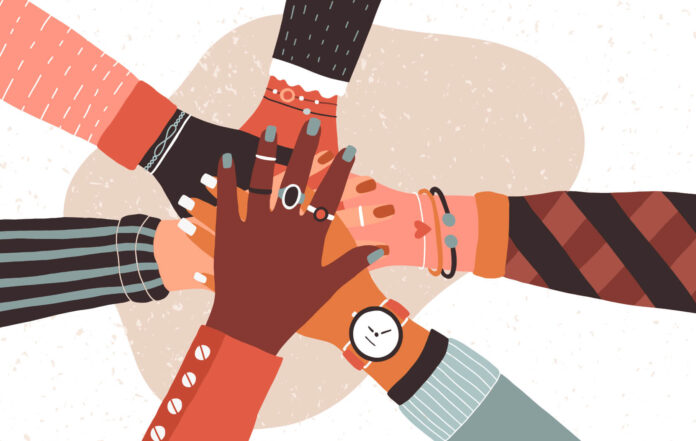The initial steps a company takes with its new hires can either establish a strong foundation for success or lead to early disengagement. It’s more than just the first handshake or introduction.
It’s the entire onboarding workflow that sets the tone.
Establishing the proper onboarding best practices can not only propel your employees on the right path but also ensure that they feel valued, connected, and primed for success from day one.
Let’s explore how you can make this happen in simple yet impactful ways.
First Impressions Count
Remember the adage, ‘You never get a second chance to make a first impression‘? That holds true for onboarding.
Ensuring that new hires have a smooth start, from signing the contract to their first day, will lay a foundation of trust and appreciation.
Equip them with the tools, accesses, and resources they need early on so they don’t have to chase these basics once they’re on board.
A Structured Onboarding Plan

A clear and structured onboarding workflow ensures consistency in the process for every new hire, regardless of their role or department.
It not only helps in setting clear expectations but also assists managers in tracking progress and addressing any gaps early on.
Make It Interactive
While paperwork is a crucial part of the onboarding process, it shouldn’t be the only component.
Interactive sessions, team-building exercises, and workshops can provide a break from routine paperwork and allow new employees to actively engage with the company culture.
Assign a Buddy or Mentor
Having a go-to person can make a world of difference for new hires. Assigning a buddy or mentor from day one ensures they have a friendly face to approach with questions or concerns.
This one-on-one relationship can accelerate their integration into the company culture and foster quicker connections with the team.
Continuous Learning
Onboarding doesn’t end after the first week or even the first month. Continuous learning opportunities should be a cornerstone of your onboarding workflow.
Offering regular training sessions, workshops, and opportunities for professional development demonstrates a company’s commitment to its employees’ growth.
Solicit Feedback and Iterate
Your onboarding process should evolve based on feedback. Regularly ask new hires about their onboarding experience, what they found beneficial, and areas of improvement. Use this feedback to refine your practices, ensuring they’re always relevant and effective.
Introduce Company Culture Early On

The earlier an employee understands and resonates with the company’s mission, vision, and values, the quicker they can align their contributions towards them.
Make sure these foundational elements are integrated into the initial stages of the onboarding process.
Set Clear Expectations
It’s essential for new hires to know what’s expected of them. Clear role definitions, objective-setting sessions, and performance metrics should be a part of the onboarding workflow. This clarity helps them focus their energies in the right direction from the start.
Foster Social Connections
Humans are social beings, and forming personal connections at work can significantly impact an employee’s well-being and job satisfaction.
Organize team lunches, outings, or casual coffee breaks to help new hires establish bonds with their colleagues.
Technology is Your Friend
Invest in onboarding software or platforms that can streamline the process, keep track of progress, and ensure no critical steps are missed. These tools can offer a more personalized experience for new hires and ease the administrative burden on HR.
Personalized Onboarding Journeys: Beyond One-Size-Fits-All
Every individual is unique in their experiences, skills, and aspirations. Recognizing this, progressive companies are moving away from a one-size-fits-all approach to a more tailored onboarding experience.
Research shows that employees who undergo personalized onboarding feel more valued and are likely to stay longer with the company.
Practical Implementation Tips

- Role-Based Customization: Understand the distinct responsibilities and skills required for each role. For a software developer, diving deep into the company’s coding guidelines might be crucial, whereas a sales representative might benefit more from client relationship case studies.
- Individualized Training Modules: Use pre-onboarding surveys to gauge the new hire’s familiarity with specific tools or processes. Tailor training modules to bridge the knowledge gaps while ensuring they align with the individual’s career trajectory.
- Personal Introductions: Connect new hires with mentors or peers who share similar backgrounds or career aspirations. These relationships can be instrumental in providing guidance, alleviating initial jitters, and fostering a sense of belonging.
Employee Well-Being Initiatives: Building Resilience from Day One
In today’s fast-paced work environment, employee well-being is paramount. A Harvard Business Review study found that companies that prioritize employee well-being tend to have increased job performance and higher levels of satisfaction.
Kickstarting Wellness
From the outset, introduce new hires to wellness programs. Highlight resources like relaxation rooms, counseling services, or even digital platforms that promote mindfulness and stress management.
Demonstrating a commitment to work-life balance from day one not only boosts morale but also sets a precedent for a healthy work culture.
Diversity, Equity, and Inclusion (DEI) Integration: Planting Seeds for an Inclusive Future

Diversity, equity, and inclusion are not just buzzwords; they’re a commitment to creating a workspace where all voices are valued and heard. Integrating DEI principles into onboarding showcases the organization’s dedication to fostering an environment where everyone can thrive.
How to Seamlessly Integrate DEI
Educational Workshops: Conduct sessions that shed light on unconscious biases, cultural differences, and the importance of inclusivity.
Clear Communication: Share the organization’s DEI policies, past initiatives, and future goals. Make it clear that the company is not just ‘talking the talk’ but is genuinely invested in these values.
Wrapping It Up

In the modern workplace, onboarding is more than just a set of tasks to be ticked off a list. It’s the first chapter in an employee’s journey with your company.
Ensuring this chapter is positive, engaging, and informative can set the tone for their entire tenure.
By incorporating these best practices into your onboarding workflow, you’ll lay a solid foundation for employee success, driving individual and organizational growth.
Remember, when your employees thrive, so does your business!








